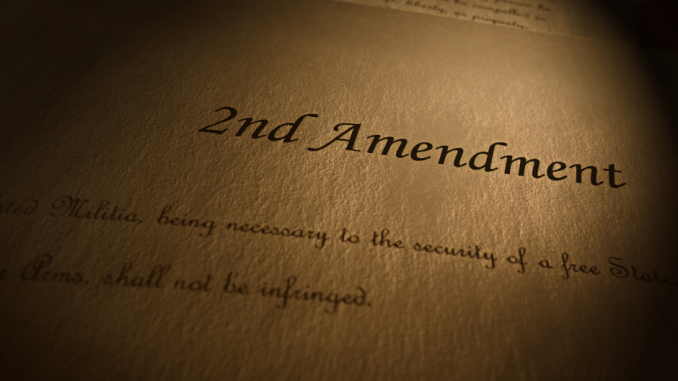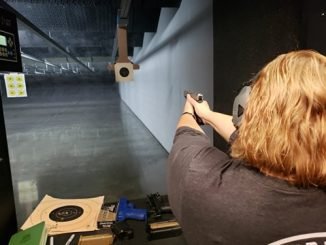
Those of you who managed to filter through the COVID-19 news probably noticed that we got some bad news from the Supreme Court this week. Monday, the Supreme Court announced they are dismissing the New York case which deals with transporting guns outside the home. While this is disappointing, this article may provide a bit of silver lining.
Introduction
So anyhow, the Supreme Court has – in my opinion deliberately – given the Second Amendment the cold shoulder over the past several years. Notably, Justice Thomas has repeatedly inferred – in his dissents when the Court refuses to consider Second Amendment cases – the Court is treating the right as a “second class” or “disfavored” right. Advocates of Second Amendment cases have watched year after year as the Court turned away this year’s big one: carry outside the home, ten-day waiting periods, assault weapons bans, magazine capacity restrictions… you name it and they’ve been presented and rejected.
And then came New York State Rifle & Pistol Association Inc. v. City of New York, New York (for brevity, I’m gonna call this “NYSRPA” from here on out).
The Post-Game
NYRSPA involved a challenge to New York City’s gun licensing scheme. Basically, New York City has a permit requirement to even own a gun. They issue different types of permits: carry permits and premises permits. A carry permit does exactly what it sounds like and is virtually impossible to get. The unwashed masses can get a premises permit if they jump through several hoops, but can only transport the gun outside the home when going to a few places, such as a gun range or gunsmith. The law being challenged prohibits persons with premises permits from leaving the City with their gun. It allows them to travel only to one of a few gun ranges in New York City with their firearm.
Why This Matters
This was the first time in a decade the Supreme Court agreed to take up a Second Amendment case. As a law student, you will read (and brief and be asked lots of uncomfortable questions about) literally hundreds of Supreme Court cases dealing with the rights to free speech and free exercise of religion, freedom to assemble and the right to be free from unreasonable searches and seizures, etc. In contrast, there are exactly three cases where the Supreme Court has directly addressed the right to keep and bear arms, a handful of cases where they have mentioned it in passing, and one case from a few years ago where everybody agreed on a narrow ruling about carrying stun guns in Massachusetts.
The Second Amendment has been subject to various “standards of review”–how a court will analyze a given issue. This occurs in the lower courts, largely because Heller – the case that affirmatively stated we have an individual right to keep and bear arms (at home) – did not effectively establish a standard. Or, if it did, it obviously left plenty of room for lower courts to work around it. NYRSPA was a big deal because it gave the Court its first real opportunity to define (or reinforce) a standard of review.
What Happened
Obviously, they didn’t do that this time around. Thanks to a miraculous epiphany on New York’s part, which conveniently occurred only after the Supreme Court agreed to review the case, the law being challenged in NYRSPA was determined by New York to be a bad idea. It was repealed and steps were taken to (theoretically) prevent a similar law from being enacted. By a 6-3 vote, the Court then held the case was moot (basically, saying the challengers got everything they’d asked for). There are several reasons they may have chosen to do this, but I’m not going to speculate about them here.
The Supreme Court’s decision is Not All Bad
The first thing I will say is that I think NYSRPA was a bad case.
Not because the law didn’t need to go. Primarily because I think the law being challenged was so out-of-touch with what’s happening in the rest of the country. That it essentially gave the Court an off-ramp.
Put another way, if the case were decided on the merits, it would have provided a very narrow ruling which wouldn’t have had much effect on the nation. It would not have allowed for nationwide CCW, and it probably wouldn’t have provided building blocks for that. The best case scenario was that we got a ruling which said that the right to bear arms has meaning. That the meaning applies outside the home, and the lower courts were left to sort that out for a few more years. That isn’t the quick relief Second Amendment advocates have been all but begging for.
None of that changes my opinion that what New York did was chickenshit.
Second, the mere fact that the Court even took a Second Amendment case is a huge deal.
They haven’t done that since 2010. In my opinion, this is entirely the result of Justice Kavanaugh being on the Court. I think we’ll see more of this in the future.
Speaking of Justice Kavanaugh, my third point deals a lot with him. Justice Kavanaugh concurred with the majority – that the case was moot – but also wrote separately to express his own, unique thoughts. The part that matters:
“I also agree with Justice Alito’s general analysis of Heller and McDonald . . . And I share Justice Alito’s concern that some federal and state courts may not be properly applying Heller and McDonald. The Court should address that issue soon, perhaps in one of the several Second Amendment cases with petitions for certiorari now pending before the Court.”
That. Is. Huge. He is explicitly stating (1) he thinks Justice Alito is correct, and that lower courts are misapplying Heller; (2) the Court needs to address the Second Amendment; and (3) the Court can do that very soon.
Now, Justices Alito, Gorsuch, and Thomas dissented from the majority. They said that not only is there still stuff to decide, but also that New York City’s actions violate the Second Amendment. Alito, writing for the dissent, gave his ideas on how to interpret the Second Amendment. In English, he is telling us how he would vote and how he would decide future cases. The good news is that his view – shared, apparently, by at least three other justices (Thomas, Kavanaugh, and Gorsuch) – of the Second Amendment is very broad.
The Pre-Game?
Justice Kavanaugh mentions those other petitions pending at the Supreme Court. Let’s take a look at those. Before we do, however, here’s the headline: the Supreme Court just set ten Second Amendment cases for conference. This conference is looming, occurring Friday, May 1, 2020. For those that don’t know, conferences are where the Court discusses whether to take a case. And though they just ducked their first real chance to rule on the Second Amendment, they decided they needed to talk about ten other Second Amendment cases this week. Given what I mentioned above, I don’t think that’s a coincidence.
What’s pending:
The cases Justice Kavanaugh is referring to include:
- Four cases challenging “may issue” conceal carry in New Jersey and Massachusetts.
- Two cases challenging assault weapons bans.
- A challenge to California’s safe handgun roster (the thing that basically bans all new handguns from being sold in the state).
- A case challenging whether Illinois can ban non-residents from obtaining a conceal carry permit.
Honestly, all of those cases are a lot better for us than NYSRPA. Some of them – including the one I’m about to talk about – have been sitting in limbo for the past year, with no action taken on them. Of course, there’s no guarantee they’ll decide to take any of them, so don’t get too excited. However, convention dictates that the Supreme Court works under what’s known as the Rule of Four. Basically, four votes are required to review a case. As I mention above, the votes are there.
If I Were Betting on What Case They Take…
My money is on Rogers v. Grewal. Rogers is a challenge to New Jersey’s “may issue” carry permit scheme. In practice, a regular, law-abiding citizen cannot carry a handgun in public in New Jersey. Kind of like in most of California, New York City, Maryland, Massachusetts, and several other jurisdictions. New Jersey requires a citizen prove they have a genuine “need” to carry. Their definition of “need” operates to prohibit basically everybody. Of course, nobody with political connections, a large amount of money, or a movie credit has ever gotten a permit in New Jersey…
In short, this is exactly the sort of law – one that prohibits an honest citizen from defending themselves outside their home – we want gone.
Why Make that Bet?
Without getting into legal history too much, courts in places like California and New York basically say that if the law doesn’t directly impact your right to keep some sort of gun at home, it doesn’t take very much for the government to win when a law is challenged. They do this because Heller leaves room for them to do that. Rogers would address the extent – if any – the Second Amendment applies outside the home. It will directly address the question of whether the average, honest citizen has a right to carry a firearm outside their home or business. So, it addresses an issue that lower courts constantly grapple with.
Even though it’s what I want most for the Court to take up, I also think it’s the most likely.
Here’s Why
Even New Jersey admits (or at least doesn’t deny) that the case creates a direct circuit split. A circuit split is what happens when two or more of the Circuit Courts of Appeals reach opposite conclusions on the same issue. There are eleven covering different regions of the country, plus another one for D.C. The New Jersey case comes from the Third Circuit, and another case – Wrenn v. District of Columbia – comes from the D.C. Circuit Court of Appeals. The thing is, even New Jersey admits that the “may issue” law which Wrenn decided was unconstitutional is functionally identical to the New Jersey law being challenged in Rogers.
This is important because, while there isn’t a surefire way to get your case to the Supreme Court, a direct circuit split is arguably one of the most reliable ways to get the Court to grant certiorari. Going back to what I spoke about earlier, four justices have stated they agree that lower courts are not applying Heller properly. Put another way, I don’t think the authors of Heller meant for it to be used as a justification to uphold almost every single one of California’s gun control laws passed since 2008, but it has. Justices Alito and Thomas have been quite vocal about that. And, at least by convention, it takes the votes of four justices to grant certiorari in a case.
The Takeaway
- NYSRPA is a big deal, if nothing else because it’s the first gun case we’ve seen in a very long time;
- NYSRPA is probably not the case we were looking for;
- The dissenting and concurring opinions in NYRSPA provide genuine reason for optimism that the Supreme Court will take up another gun case in the future, and probably soon;
- After deciding NYSRPA, the Court gave itself opportunity to decide whether to take another gun case this week;
- There’s a conceal carry case pending that happens to be a textbook example of the sort of cases the Supreme Court likes to take up;
- The conditions are right for the Court to take a case because four votes are there to accept it.
Now, it’s entirely possible the Supreme Court decides not to wade into this issue. In my opinion, that would be pure cowardice on the part of the Court. However, there is absolutely no requirement that they grant certiorari on Rogers or any of the other gun cases. As far as opportunities for expanding the Second Amendment go, in my opinion we’ve never had a better opportunity.





Be the first to comment